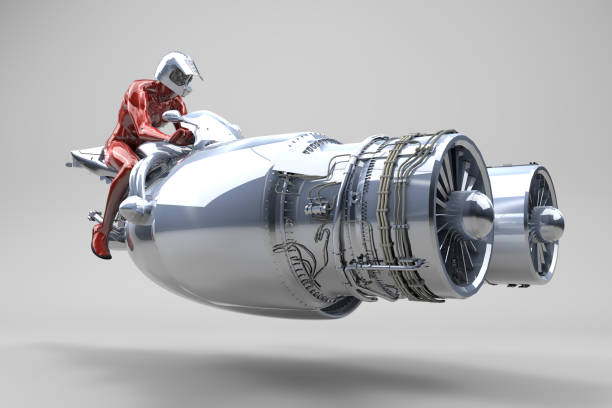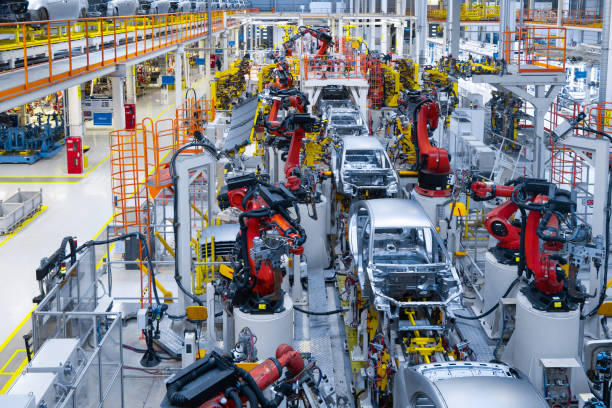
What is automotive technology? This question may have crossed your mind as you sat behind the wheel of your car, marveling at the advanced features and capabilities it offers. In simple terms, automotive technology refers to the application of scientific knowledge and engineering principles to design, manufacture, and operate vehicles. From safety innovations to cutting-edge entertainment systems, automotive technology has revolutionized the way we drive and has become an integral part of our daily lives. But what does the future hold for this rapidly advancing field? Let’s take a closer look at how automotive technology is driving us toward the future.
Understanding the Basics of Automotive Technology
When it comes to automotive technology, it’s important to have a solid understanding of the basics. This knowledge will not only enhance your appreciation for the vehicles you drive, but it will also allow you to make informed decisions when it comes to purchasing, maintaining, and repairing your car.
At its core, automotive technology encompasses the various systems and components that work together to enable a vehicle to function. These systems can be divided into three main categories: powertrain, chassis, and body.
The powertrain includes the engine, transmission, and drivetrain, which work together to generate and deliver power to the wheels. The chassis consists of the frame, suspension, steering, and brakes, all of which contribute to the vehicle’s stability, handling, and stopping power. Lastly, the body encompasses the exterior and interior components, such as the body panels, windows, seats, and dashboard, which provide comfort, safety, and aesthetics.
In addition to these basic systems, automotive technology also involves a wide range of specialized components and features. From fuel injection systems and hybrid powertrains to anti-lock braking systems and advanced driver-assistance systems, there is a multitude of advancements that have improved the performance, efficiency, and safety of vehicles.
By understanding the basics of automotive technology, you can better appreciate the advancements and innovations that have made our cars more than just modes of transportation. So, the next time you hop behind the wheel, take a moment to marvel at the incredible engineering and scientific knowledge that goes into making your vehicle operate smoothly and efficiently.

The Role of Electronics in Modern Vehicles
In today’s modern vehicles, electronics play a vital role in shaping the driving experience. From the moment you step inside the car, you are greeted by a plethora of electronic features that enhance both convenience and safety.
One of the most prominent examples of electronics in modern vehicles is the infotainment system. Gone are the days of basic AM/FM radios and cassette players. Today, we have sophisticated touchscreens that provide a seamless integration of audio, navigation, and communication features. Whether it’s streaming your favorite music, receiving real-time traffic updates, or making hands-free calls, the infotainment system has become an integral part of our driving experience.
Electronics also play a crucial role in vehicle safety. Advanced driver-assistance systems (ADAS) have become increasingly common in modern cars. These systems use various sensors, cameras, and radar technology to detect potential hazards on the road and assist the driver in avoiding collisions. Features such as adaptive cruise control, lane-keeping assist, and blind-spot monitoring have proven to be invaluable in reducing accidents and making our roads safer.
Moreover, electronics have revolutionized vehicle maintenance and diagnostics. With onboard computer systems, mechanics can now connect to a car’s electronic control unit (ECU) to diagnose issues and perform software updates. This not only saves time but also ensures that vehicles are operating at their optimal level.
The Impact of Automation in the Automotive Industry
Automation has had a profound impact on the automotive industry, revolutionizing the way vehicles are manufactured, operated, and maintained. This transformative technology has not only increased efficiency and productivity but has also improved safety and overall driving experience.
One of the most notable areas where automation has made a significant impact is in the manufacturing process. Automation has allowed for the development of advanced assembly lines and robotics that can perform complex tasks with precision and speed. This has resulted in increased production rates, improved quality control, and reduced costs. Additionally, automation has enabled the creation of custom-made vehicles, as production lines can be quickly reconfigured to accommodate specific design requirements.
In terms of vehicle operation, automation has given rise to advanced driver-assistance systems (ADAS). These systems use a combination of sensors, cameras, and artificial intelligence to enhance safety and convenience on the road. Features such as adaptive cruise control, automatic emergency braking, and lane-keeping assist have proven to be instrumental in reducing accidents and fatalities. Moreover, automation has paved the way for the development of autonomous vehicles, which have the potential to revolutionize transportation by eliminating the need for human drivers altogether.
Automation has also had a significant impact on vehicle maintenance and diagnostics. With the advent of onboard computer systems and connected technologies, mechanics can now access a vehicle’s data and perform remote diagnostics, saving time and increasing efficiency. Automation has also allowed for over-the-air software updates, enabling vehicles to receive the latest advancements and improvements without the need for physical maintenance.
Overall, automation has brought about tremendous advancements in the automotive industry, making vehicles safer, more efficient, and more convenient. As technology continues to evolve, we can expect even greater automation and innovation, driving us towards a future where transportation is smarter, greener, and more interconnected.
Sustainable Solutions: The Shift to Electric Vehicles
One of the most significant developments in automotive technology is the shift towards electric vehicles (EVs). With the increasing concern over climate change and the need to reduce greenhouse gas emissions, EVs offer a sustainable solution to our transportation needs.
Electric vehicles operate by using electric motors powered by rechargeable batteries, eliminating the need for traditional combustion engines that rely on fossil fuels. This shift to electric power brings numerous benefits, both for the environment and for drivers.
First and foremost, EVs produce zero tailpipe emissions, significantly reducing air pollution and improving air quality. By transitioning to electric vehicles, we can reduce our carbon footprint and combat climate change. Additionally, the use of renewable energy sources to charge EVs further enhances their sustainability.
Apart from environmental benefits, EVs also offer economic advantages. Electric vehicles have lower operating costs compared to conventional buses. The cost of electricity is typically cheaper than gasoline, and EVs require less maintenance due to the absence of oil changes, spark plugs, and other engine-related components. Moreover, governments and organizations around the world are offering incentives and subsidies to promote the adoption of electric vehicles, making them more accessible and affordable for consumers.
The growing popularity of electric vehicles has spurred significant advancements in charging infrastructure. With an expanding network of charging stations, EV owners can now easily find charging points and enjoy the convenience of charging their vehicles while on the go.
The shift to electric vehicles represents a major step towards a sustainable future. As technology continues to improve, EVs are becoming more affordable, offering longer driving ranges, and charging times are decreasing. With this ongoing progress, we can expect electric vehicles to become the norm in the automotive industry, further reducing our dependence on fossil fuels and contributing to a greener and more sustainable planet.
Connectivity and Vehicle Technology
In today’s digital age, connectivity plays a crucial role in the automotive industry. The integration of technology into vehicles has not only transformed the driving experience but has also revolutionized the way we interact with our cars.
Connectivity in vehicles refers to the ability of cars to communicate with external devices and networks, such as smartphones, other vehicles, and even traffic infrastructure. This connectivity enables a wide range of features and services that enhance safety, convenience, and entertainment.
One of the most significant advancements in connectivity is the emergence of connected car technology. With this technology, vehicles can be equipped with internet connectivity, allowing them to access a multitude of services and data. For example, drivers can receive real-time traffic updates, weather forecasts, and even access their favorite music streaming platforms directly from their car’s infotainment system. This level of connectivity not only keeps drivers informed but also ensures a more enjoyable and personalized driving experience.
Furthermore, connectivity plays a vital role in vehicle safety. Through connected technologies, cars can communicate with each other and exchange information about road conditions, traffic congestion, and potential hazards. This allows drivers to make more informed decisions and react accordingly, ultimately improving overall road safety.
Additionally, connectivity enables remote vehicle monitoring and diagnostics. With the help of telematics systems, car manufacturers and service providers can remotely access a vehicle’s data, including its location, performance metrics, and maintenance needs. This allows for proactive maintenance, reducing downtime and enhancing the reliability of vehicles.
The future of connectivity in vehicles is promising. With the advent of 5G networks, vehicles will have access to faster and more reliable internet connections, enabling even more advanced features and services. Imagine being able to download software updates, stream high-definition media, and seamlessly connect with smart devices in your car, all at lightning-fast speeds.
Connectivity and vehicle technology are driving us towards a future where cars are not only modes of transportation but also intelligent and interconnected devices. As technology continues to advance, we can expect even more innovative features and services that will further enhance the driving experience. So buckle up and get ready for a connected and technology-driven journey ahead.
The Future of Automotive Technology
The future of automotive technology is an instigative and ever- evolving geography. As technology continues to advance at a rapid pace, we can expect to see incredible innovations that will further shape the way we drive and interact with vehicles. Here are some key areas where we can anticipate significant developments in the future:
- Autonomous Vehicles: Self-driving cars have already made their debut on the roads, and the future holds even more possibilities. As technology improves and regulations catch up, we can expect to see more advanced autonomous vehicles that can navigate complex city environments, interact with pedestrians, and handle various driving conditions. This will not only revolutionize the transportation industry but also lead to safer roads and increased accessibility for all.
- Electric Vehicle Advancements: The shift to electric vehicles is gaining momentum, and the future holds immense potential for further advancements. We can expect to see longer driving ranges, faster charging times, and more efficient batteries. Additionally, advancements in battery technology may lead to new form factors and designs, making electric vehicles even more appealing to a wider range of consumers.
- Connectivity and Intelligent Systems: The integration of connectivity and intelligent systems will continue to shape the future of automotive technology. Vehicles will become increasingly connected to each other, infrastructure, and smart devices. This will enable enhanced communication, real-time updates, and personalized experiences, ultimately making our driving journeys more efficient and enjoyable.
- Sustainability and Green Solutions: The automotive industry is making great strides towards sustainability, and the future will bring even more green solutions. We can expect to see advancements in hydrogen fuel cell technology, as well as the integration of renewable energy sources into vehicle charging infrastructure. These developments will further reduce our dependence on fossil fuels and contribute to a greener and more sustainable planet.
- Advanced Safety Features: Safety will always be a top priority in the automotive industry, and future technologies will continue to prioritize driver and passenger well-being. We can anticipate advancements in advanced driver-assistance systems (ADAS), with features such as predictive analytics, improved object recognition, and more reliable emergency braking systems. Additionally, advancements in vehicle-to-vehicle communication will enhance collision avoidance systems and make our roads even safer.
In conclusion, the future of automotive technology is filled with possibilities. From autonomous vehicles and electric advancements to connectivity and sustainability, we are on the cusp of a transformative era in transportation. As technology continues to evolve, our vehicles will become smarter, greener, and more interconnected, driving us toward a future where driving is not only efficient but also a seamless and enjoyable experience.



